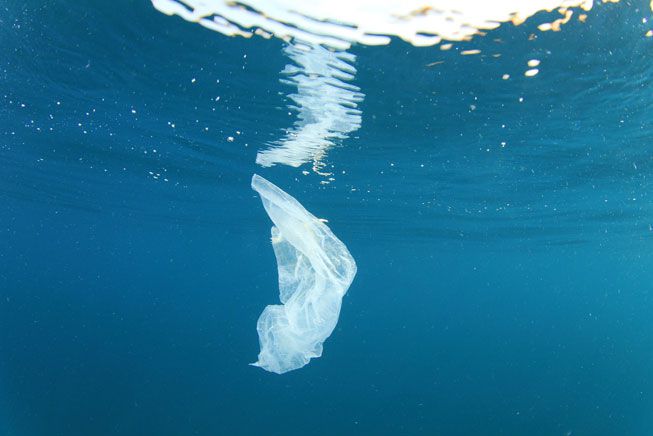A team of researchers have developed a model to track the pathways and fate of plastic debris from land-based sources in the Mediterranean Sea. They show that plastic debris can be observed across the Mediterranean, from beaches and surface waters to seafloors, and estimate that around 3,760 metric tons of plastics are currently floating in the Mediterranean.
Global plastic production has been increasing each year since the 1950s, with 368m tons of plastic produced in 2019. A high proportion of plastic waste ends up in seas and oceans – estimates suggest that more than 250,000 tons of plastic debris are currently floating around in oceans all over the world.
A new study published in Frontiers in Marine Science shows that a shocking amount of micro- and macroplastic debris is currently floating in the Mediterranean Sea.
The Mediterranean Sea is considered a hot spot for plastic pollution. This is likely due to its densely populated coastlines, fishing, shipping, tourism, and a limited outflow of surface water to the Atlantic. At the same time, the Mediterranean is rich in biodiversity, making it an area of concern for the conservation of marine ecosystems.
Plastic pollution affects all levels of marine biodiversity, with micro- and macroplastic particles found at the sea surface, beaches, the seafloor, and within the bodies of big and small marine animals. It has also been reported that humans ingest plastic through seafood consumption.
Modelling plastic pollution
A new model developed by researchers from the Hellenic Centre for Marine Research, Greece, tracked the pathways and ultimate fate of plastic debris in the Mediterranean Sea. The model performed a simulation over the period from 2010 to 2017, tracking plastics from land-based sources such as rivers and coastal cities, while taking into account important dispersion processes such as sinking, vertical/horizontal mixing, wind, and currents. It also identified potential accumulation patterns of micro- and macroplastics in the surface layer, water column, seafloor, and on beaches.
This revealed that the total annual plastics load going into the Mediterranean is approximately 17,600 tons, of which 3,760 tons are currently floating in the Mediterranean. Of the total, 84% ends up on beaches and the remaining 16% ends up in the water column or the sea floor.
“Simulations of plastic distribution in marine environments are currently characterized by a large degree of uncertainty. Experimental data on several processes that affect the fate of plastics, such as sinking, ingestion by marine organisms and fragmentation into smaller pieces are still quite limited,” said lead author Dr Kostas Tsiaras.
“Our model showed a reasonable skill in reproducing the observed distributions of plastics in the marine environment and thus can be used to assess the current status of plastic pollution in the Mediterranean and evaluate the impact of future cleaning actions and management plans.”
The model also described biofouling as a potential mechanism for the removal of microplastics from the sea water surface. Biofouling happens when micro-organisms such as algae accumulate on floating and submerged objects, including plastic debris.
Plastics are taking over the oceans
“Microplastics are less abundant in the sea surface due to their faster sinking from the attachment of heavier marine organisms (biofouling) and accumulate deeper in the water column and seafloor. On the other hand, macroplastics, such as plastic bags and styrofoam may float around for longer time periods, and travel long distances from their sources,” said Tsiaras.
Sources of microplastics (such as wastewater treatment plants) were mainly found near metropolitan cities and heavily populated areas along French, Spanish, and Italian coasts. Larger sized microplastics were found in areas with high untreated wastewater, such as the coasts off Greece and Turkey.
Macroplastics were abundant in areas with important riverine input such as Algerian, Albanian, and Turkish coasts, and close to metropolitan cities and highly populated coasts (Spain, France, Italy).
Policy recommendations
“The model outputs can be used to identify ecologically (bird and cetacean habitats) or commercially (aquaculture and fisheries) important areas that are potentially threatened by plastic pollution. This is important for the design of ecosystem-based management plans and policies for the mitigation of plastic pollution, which is often a trans-boundary environmental problem, as floating plastics may travel long distances from their sources,” according to Tsiaras.
The social, political, and cultural variety of inhabited countries along the coastline of the Mediterranean makes the implementation of a common marine ecosystem management policy difficult. But models such as the one from the study can help mitigate this problem.
“The use of predictive models, like the one presented here, that can connect observed plastic concentrations with their sources, is critical for the designation of successful management plans.”















